Osprey, Visarend, Fischadler, Águia-pescadora, Aguila Pescadora
Spotted in the Alentejo region of Portugal. Osprey sound
The Osprey (Pandion haliaetus), sometimes known as the sea hawk or fish eagle or fish hawk, is a diurnal, fish-eating bird of prey. It is a large raptor, reaching more than 60 cm (24 in) in length and 180 cm (71 in) across the wings. It is brown on the upperparts and predominantly greyish on the head and underparts, with a black eye patch and wings.

More photos at the bottom of this page.
The Osprey tolerates a wide variety of habitats, nesting in any location near a body of water providing an adequate food supply. It is found on all continents except Antarctica although in South America it occurs only as a non-breeding migrant.
As its other common name suggests, the Osprey’s diet consists almost exclusively of fish. It has evolved specialised physical characteristics and exhibits unique behaviour to assist in hunting and catching prey. As a result of these unique characteristics, it has been given its own taxonomic genus, Pandion and family, Pandionidae. Four subspecies are usually recognised. Despite its propensity to nest near water, the Osprey is not a sea-eagle.
The Osprey is 0.9–2.1 kg (2.0–4.6 lb) in weight and 50–66 cm (20–26 in) with a 127–180 cm (50–71 in) wingspan. The upperparts are a deep, glossy brown, while the breast is white and sometimes streaked with brown, and the underparts are pure white. The head is white with a dark mask across the eyes, reaching to the sides of the neck. The irises of the eyes are golden to brown, and the transparent nictitating membrane is pale blue. The bill is black, with a blue cere, and the feet are white with black talons. A short tail and long, narrow wings with four long, finger-like feathers, and a shorter fifth, give it a very distinctive appearance.
The sexes appear fairly similar, but the adult male can be distinguished from the female by its slimmer body and narrower wings. The breast band of the male is also weaker than that of the female, or is non-existent, and the underwing coverts of the male are more uniformly pale. It is straightforward to determine the sex in a breeding pair, but harder with individual birds.
The juvenile Osprey may be identified by buff fringes to the plumage of the upperparts, a buff tone to the underparts, and streaked feathers on the head. During spring, barring on the underwings and flight feathers is a better indicator of a young bird, due to wear on the upperparts.
In flight, the Osprey has arched wings and drooping “hands”, giving it a gull-like appearance. The call is a series of sharp whistles, described as cheep, cheep or yewk, yewk. If disturbed by activity near the nest, the call is a frenzied cheereek.
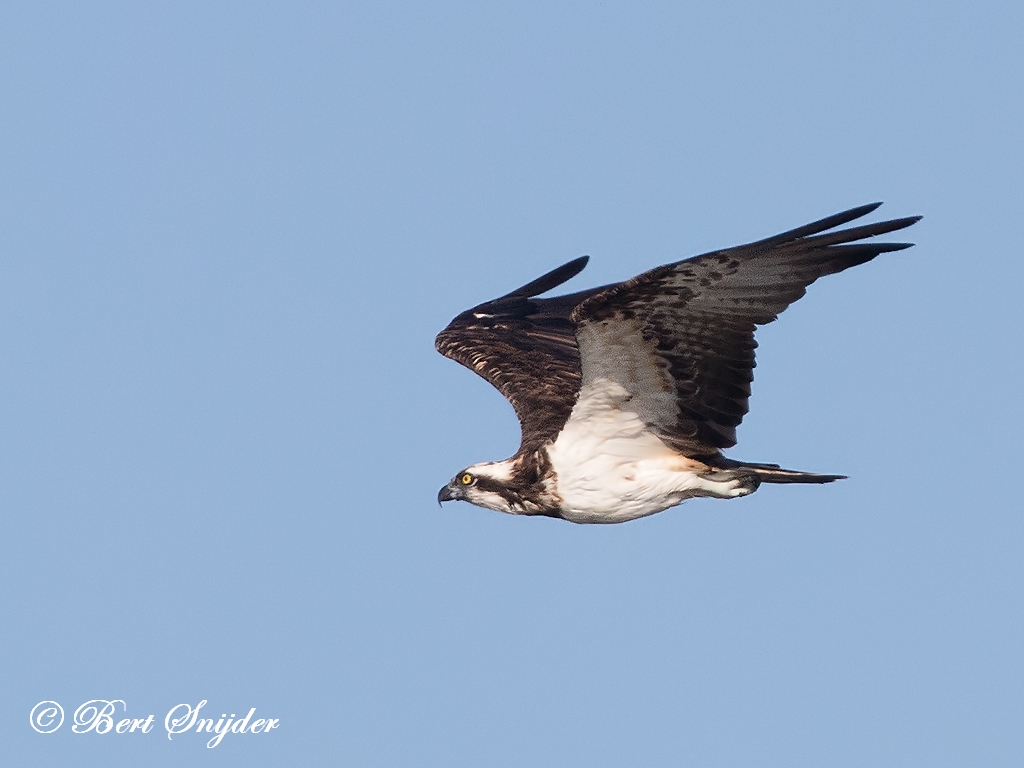
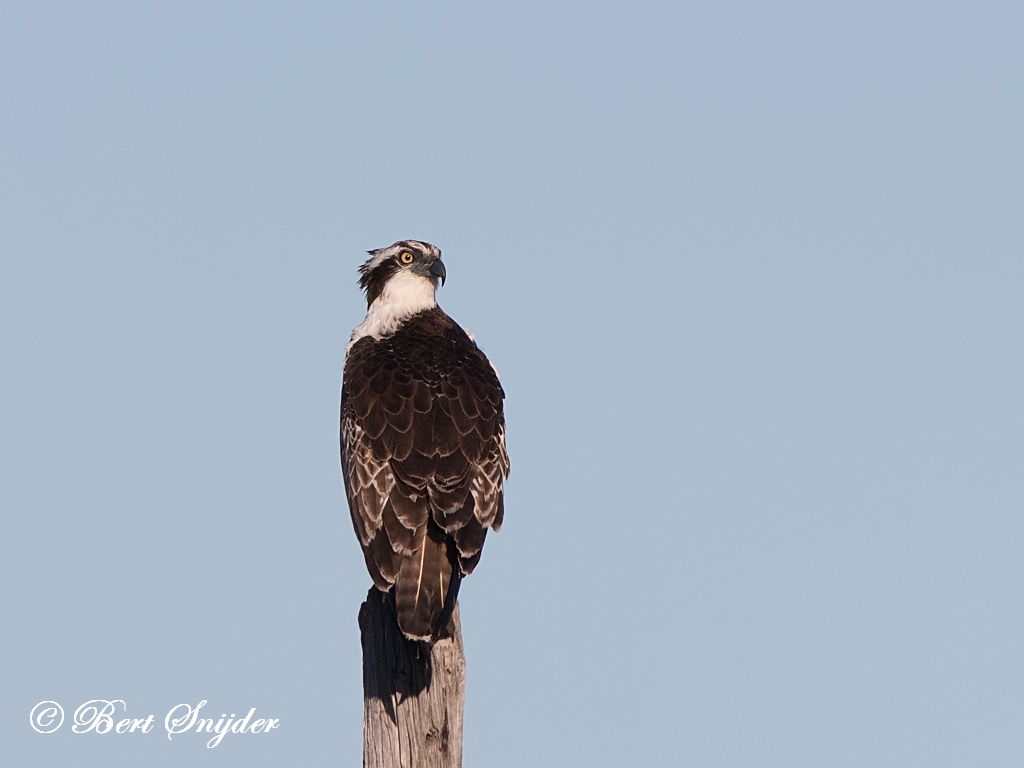
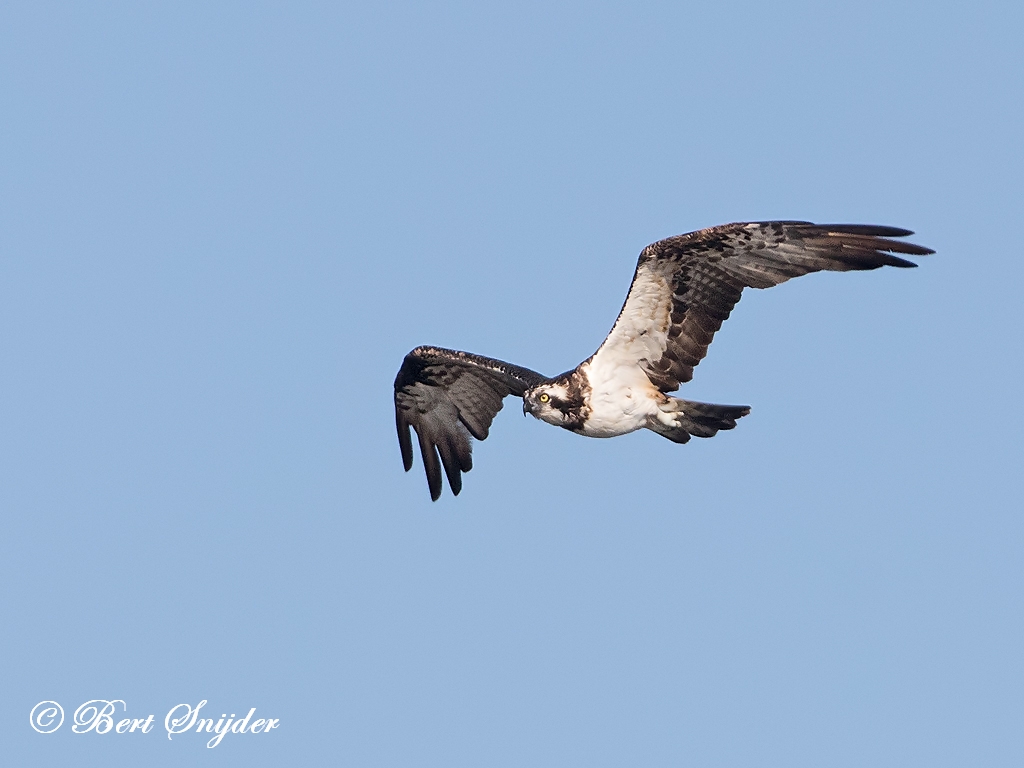
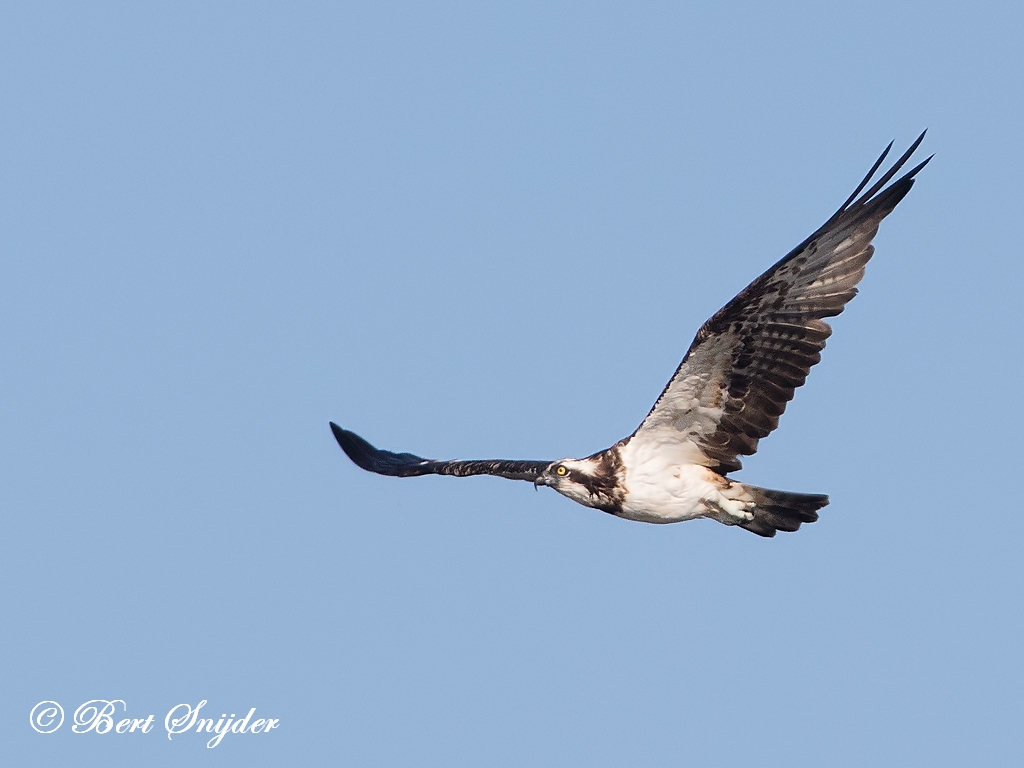
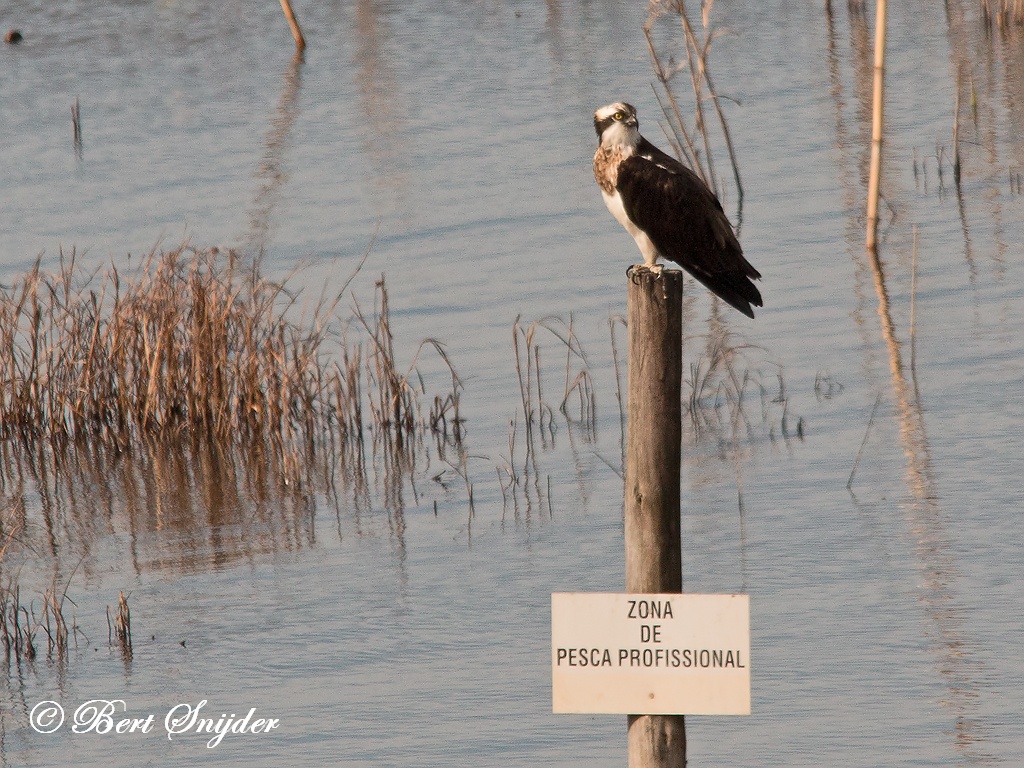
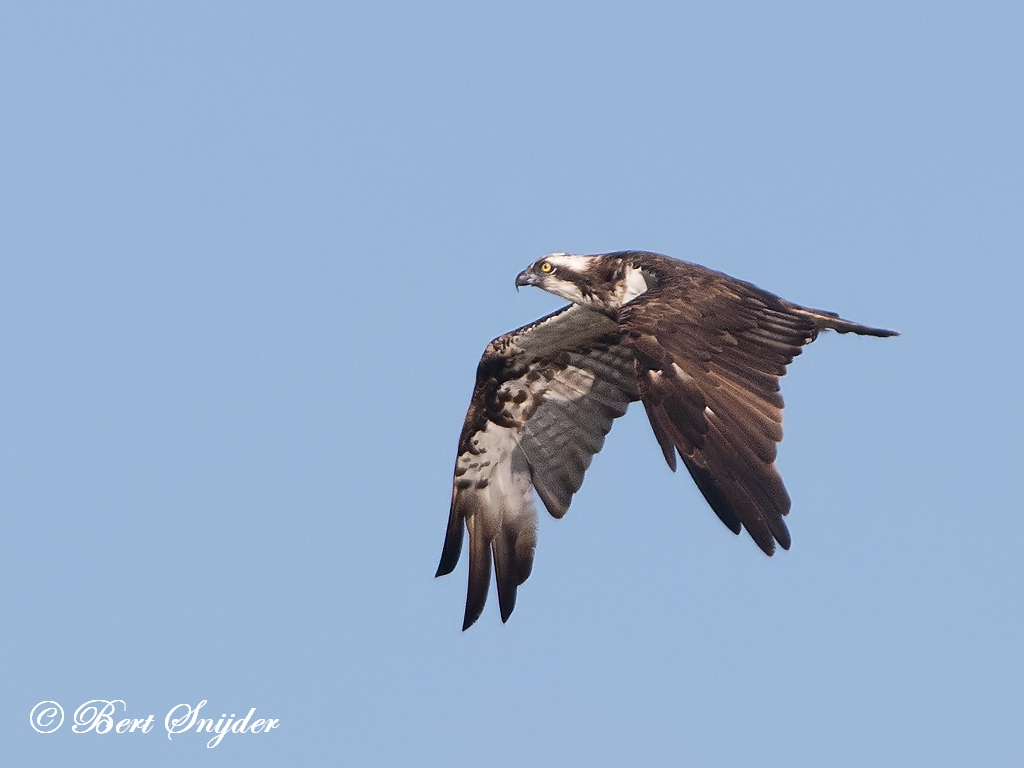

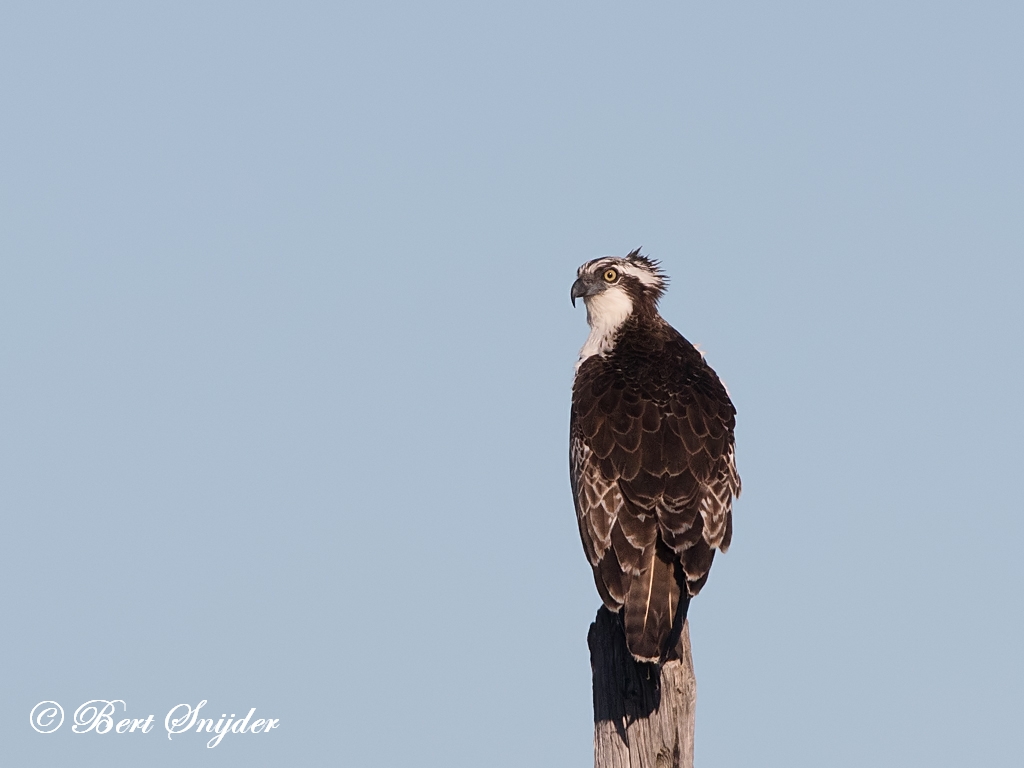
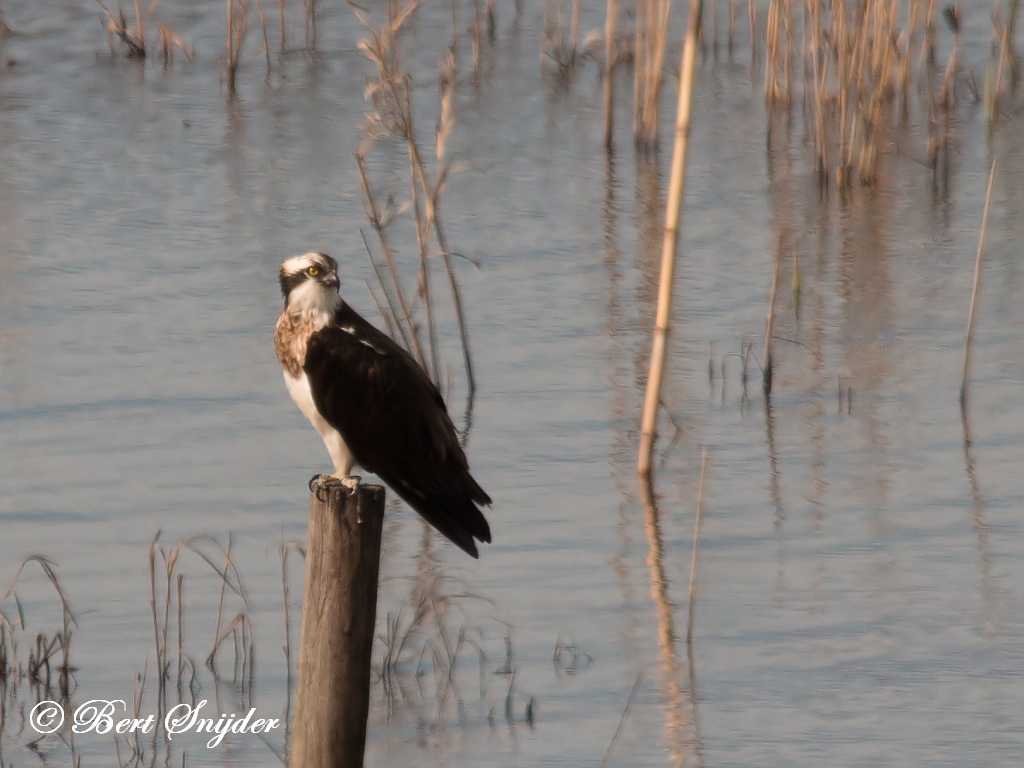
Other synonyms:
Czech: Orlovec rícní
Welsh: Gwalch y Pysgod
Danish: Fiskeørn
German: Fischadler
English: Osprey, Western Osprey
Spanish: Aguila Pescadora, Águila Pescadora, gavilán pescador, Guincho
Faroese: fiskiørn
French: Balbuzard pêcheur
Hungarian: Halászsas
Indonesian: Elang Tiram
Icelandic: Gjóður
Latin: Pandion haliaetus
Lithuanian: Žuvininkas
Dutch: Visarend
Norwegian: Fiskeørn
Portuguese: águia-pescadora
Slovak: kršiak rybár
Swedish: Fiskgjuse
Vietnamese: Chim ó cá
Travel Birdwatching Holiday Alentejo, Vacation Portugal for birders to see birds on your trip. Guided Birdwatching Tours & Trips.